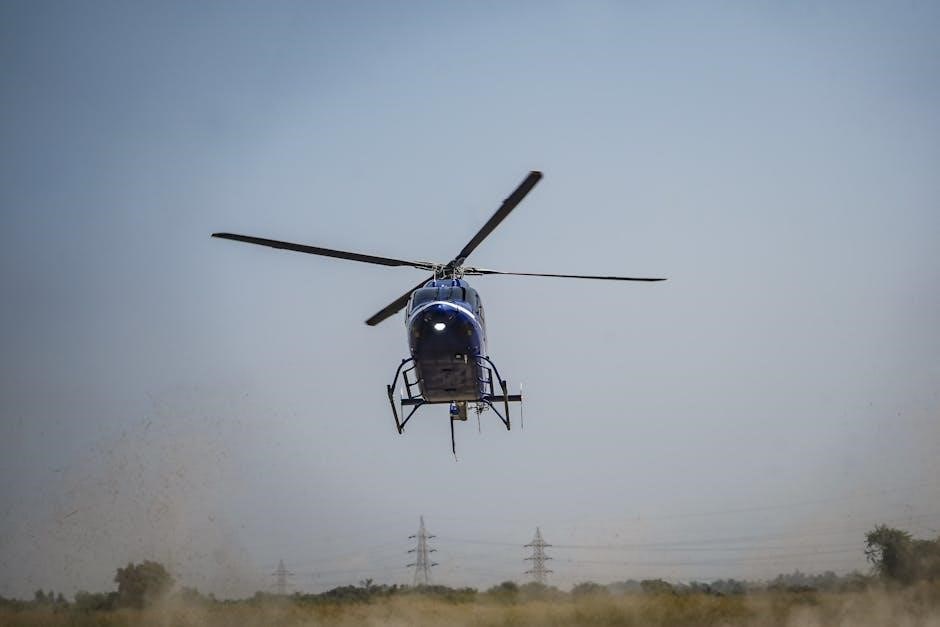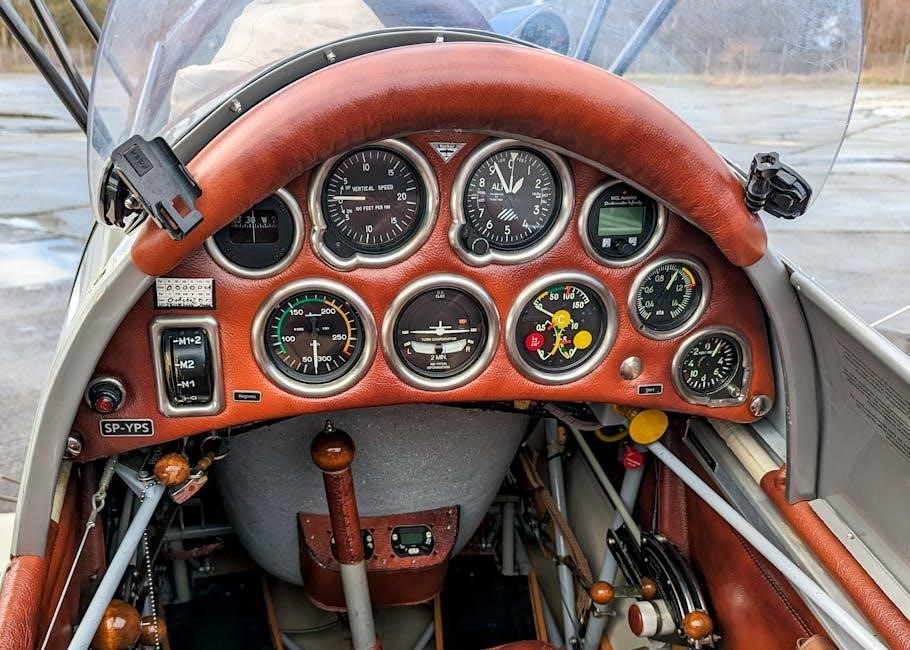The 2014 Honda Pilot manual provides comprehensive guidance on operating, maintaining, and troubleshooting your vehicle․ It ensures safe and effective use of the SUV’s features and capabilities․
1․1 What is Covered in the Manual
The 2014 Honda Pilot manual is a detailed guide that covers essential information for owners and drivers; It includes sections on vehicle operation, maintenance schedules, troubleshooting common issues, and technical specifications․ The manual provides instructions for starting and stopping the engine, understanding safety features, and utilizing the infotainment system․ It also offers guidance on DIY repairs and modifications, fuel efficiency tips, and environmental impact considerations․ Additionally, the manual outlines the vehicle’s key features, such as exterior design elements, interior comfort options, and seating configurations․ It serves as a comprehensive resource for optimizing performance, ensuring safety, and extending the lifespan of the 2014 Honda Pilot․ The manual is available in PDF format for easy access and reference․
1․2 Importance of Reading the Manual
Reading the 2014 Honda Pilot manual is crucial for understanding the vehicle’s features, operation, and maintenance requirements․ It provides essential information for safe driving, optimal performance, and troubleshooting common issues․ By reviewing the manual, owners can familiarize themselves with safety features, such as airbags and passive safety systems, ensuring proper use in emergencies․ The manual also guides users on maintaining the vehicle’s condition through scheduled services and DIY repairs, preventing potential breakdowns․ Additionally, it helps drivers understand advanced technologies, like the infotainment system and driver-assistance features, enhancing the driving experience․ Regularly consulting the manual ensures compliance with manufacturer recommendations, preserving the vehicle’s longevity and resale value․ It is a vital resource for both new and experienced owners to maximize their Honda Pilot’s capabilities and safety․
Key Features of the 2014 Honda Pilot
The 2014 Honda Pilot offers a robust exterior design, spacious three-row seating, advanced infotainment systems, and reliable performance, making it ideal for family and utility needs․
2․1 Exterior Design Elements
The 2014 Honda Pilot features a boxy, truck-like exterior design that emphasizes practicality and functionality․ Its rugged appearance is complemented by a chrome-finished front grille, giving it a bold and timeless look․ The SUV’s flat hood, angular lines, and squared-off edges contribute to its robust stance․ The base model comes with 17-inch steel wheels, while higher trims offer alloy wheels for enhanced visual appeal․ The rear design is simple yet functional, with a liftgate and a prominent bumper for easy cargo loading․ Overall, the Pilot’s exterior design balances elegance with utility, making it a versatile choice for families and adventurers alike․ The design prioritizes functionality over sportiness, ensuring ample cargo space and a durable build․
2․2 Interior Comfort and Convenience
The 2014 Honda Pilot offers a functional and family-friendly interior designed for comfort and versatility․ With seating for up to eight passengers, the Pilot provides ample space for both people and cargo․ The second and third rows can be folded flat to maximize storage capacity, while the middle row offers underfloor storage compartments․ The base LX trim includes features like tri-zone automatic climate control, a seven-speaker audio system, Bluetooth connectivity, and a USB port for convenient device charging․ Higher trims, such as the EX-L and Touring, add premium amenities like leather-trimmed seats, a power moonroof, and a rear entertainment system․ The intuitive 8-inch touchscreen infotainment system in higher trims ensures easy navigation and multimedia control, making the Pilot a practical choice for families and long road trips․
Technical Specifications
The 2014 Honda Pilot features a 3․5-liter V6 engine, producing 250 horsepower and 253 lb-ft of torque․ It comes with a five-speed automatic transmission and is available in front-wheel or all-wheel drive configurations, ensuring versatile performance for various driving conditions․
3․1 Engine and Transmission Details
The 2014 Honda Pilot is equipped with a robust 3․5-liter V6 engine, delivering 250 horsepower at 5,700 rpm and 253 lb-ft of torque at 4,800 rpm․ This engine is paired with a smooth five-speed automatic transmission, offering seamless gear shifts for optimal performance․ The V6 engine’s Variable Cylinder Management (VCM) technology enhances fuel efficiency by deactivating cylinders during low-load driving conditions, such as cruising․ The transmission features Grade Logic Control, which adjusts shift points to maintain speed on inclines, improving towing capability and overall drivability․ Whether in front-wheel drive (FWD) or all-wheel drive (AWD) configurations, the Pilot provides reliable power and responsive acceleration, making it suitable for both city commutes and off-road adventures․
Maintenance Schedule
Regular maintenance is crucial to ensure the 2014 Honda Pilot runs efficiently and maintains its longevity․ The manual outlines a detailed schedule for routine services, including oil changes every 5,000 to 7,500 miles, depending on driving conditions․ Tire rotations should occur every 6,000 to 8,000 miles to ensure even wear․ Brake inspections are recommended every 12,000 miles, while fluid checks and replacements, such as coolant and transmission fluid, are specified at intervals up to 120,000 miles․ The schedule also includes spark plug replacement at 100,000 miles and timing belt inspections at 105,000 miles․ Adhering to this schedule helps prevent mechanical issues and ensures optimal performance․ Always consult the manual for specific guidelines tailored to your driving habits and environment․
Operating the Vehicle
Start the engine by pressing the brake pedal and turning the ignition․ Shift gears smoothly using the automatic transmission․ Adjust settings for a comfortable and safe ride․
5․1 Starting and Stopping the Engine
To start the engine, press the brake pedal firmly and turn the ignition switch to the “START” position․ Ensure the shift lever is in “PARK․” The engine will start automatically․ For stopping, shift the lever to “PARK” and turn the ignition to “OFF․” Always ensure the vehicle is stationary and apply the parking brake before turning off the engine․ Refer to the manual for specific instructions on keyless start systems if equipped․ Proper starting and stopping procedures ensure safety and prevent potential damage to the vehicle’s transmission or electrical systems․ Always follow the recommended sequence to avoid unexpected issues during operation․ This section provides clear, step-by-step guidance for smooth engine management․ Proper adherence ensures optimal performance and longevity of your Honda Pilot․ Always prioritize safety when operating the vehicle․

Safety Features
The 2014 Honda Pilot is equipped with advanced safety features, including a multi-angle rearview camera, Vehicle Stability Assist, and a comprehensive airbag system for enhanced passenger protection․
6․1 Airbags and Passive Safety
The 2014 Honda Pilot features a sophisticated airbag system, including dual-stage front airbags, front side airbags, and side curtain airbags with rollover sensors for all three rows․ These airbags deploy strategically to minimize injury during collisions․ Additionally, the Pilot incorporates passive safety elements like crumple zones and a reinforced frame to absorb and distribute impact forces, ensuring a safer cabin environment․ The vehicle also includes LATCH connectors for child seats, enhancing security for younger passengers․ Honda’s commitment to safety is evident in these features, which work together to protect occupants in various crash scenarios, providing peace of mind for drivers and families alike․
Troubleshooting Common Issues
The manual guides owners in diagnosing and resolving issues like warning lights, engine performance, and transmission concerns․ It provides step-by-step solutions and recommendations for professional assistance when needed․
7․1 Identifying Warning Lights
The 2014 Honda Pilot manual includes a detailed section on identifying warning lights․ These lights, located on the dashboard, indicate various vehicle statuses or potential issues․ Common lights include the VSA (Vehicle Stability Assist) light, ABS (Anti-lock Braking System) light, and the coolant temperature light․ Each light has a specific meaning, and the manual provides descriptions to help drivers understand what each indicator signifies․ For example, the VSA light illuminates when the system is active or malfunctioning, while the ABS light indicates a problem with the anti-lock braking system․ The manual also explains how to respond when a light appears, such as checking the coolant level or visiting a dealership for diagnostics․ Understanding these lights is crucial for maintaining safety and addressing potential issues promptly․ Always consult the manual for accurate interpretations and guidance․
DIY Repairs and Modifications
The 2014 Honda Pilot manual provides guidance for DIY repairs and modifications, empowering owners to perform basic maintenance and upgrades․ Common DIY tasks include oil changes, air filter replacements, and battery maintenance․ The manual outlines step-by-step instructions for these procedures, ensuring safety and correctness․ For modifications, such as upgrading interior components or installing aftermarket accessories, the manual offers tips to maintain compatibility and functionality․ It emphasizes the importance of using genuine Honda parts or approved alternatives to preserve performance and warranty․ Additionally, the manual advises consulting certified professionals for complex repairs to avoid potential damage․ DIY enthusiasts can enhance their Pilot’s efficiency and comfort by following these guidelines, ensuring long-term reliability and satisfaction with their vehicle․ Always refer to the manual before starting any project to ensure accuracy and safety․ Modifications should be done carefully to avoid voiding the warranty or compromising safety features․ Regular updates and checks are recommended to maintain optimal performance and address any issues promptly․ By following the manual’s instructions, owners can confidently personalize and maintain their 2014 Honda Pilot․

Fuel Efficiency and Performance
The 2014 Honda Pilot offers balanced fuel efficiency and robust performance, making it a practical choice for both daily commuting and adventurous trips․ With a 3․5-liter V6 engine producing 250 horsepower, the Pilot delivers smooth acceleration and reliable power․ The front-wheel-drive model achieves an EPA-estimated 18 mpg in the city and 25 mpg on the highway, while the all-wheel-drive version slightly lowers these figures to 17 mpg city and 24 mpg highway․ The five-speed automatic transmission ensures seamless gear shifts, enhancing the driving experience․ While not designed for high-speed performance, the Pilot excels in providing a comfortable and efficient ride for families and cargo hauling․ Its moderate fuel efficiency and strong engine make it a versatile SUV for various driving conditions․ Regular maintenance, as outlined in the manual, helps maintain optimal performance and fuel economy․

Interior and Exterior Design
The 2014 Honda Pilot features a mid-size SUV design with a tough, truck-like exterior․ The interior offers a spacious, family-friendly layout with three rows of seating, providing ample room for passengers and cargo․
10․1 Seating Capacity and Configuration
The 2014 Honda Pilot offers versatile seating for up to eight passengers, arranged in three rows․ The second and third rows can be folded to maximize cargo space․ The second-row seats provide ample legroom, while the third row is best suited for children due to limited space․ Adjustable configurations allow for a balance between passenger comfort and cargo needs, making the Pilot a practical choice for families․ Additionally, the inclusion of LATCH connectors on the third-row seats ensures secure installation of child safety seats, enhancing safety and convenience for families on the go․
Technology and Infotainment System
The 2014 Honda Pilot features a advanced technology and infotainment system designed to enhance both driver and passenger experience․ The base model includes an 8-inch touchscreen display, Bluetooth connectivity, and a seven-speaker audio system․ Higher trims, such as the EX-L, add premium features like a voice-activated navigation system, satellite radio, and a rear DVD entertainment system for rear passengers․ The infotainment system is user-friendly, with intuitive controls and seamless integration of smartphone functions․ Additionally, the tri-zone automatic climate control ensures comfort for all occupants, while the available 10-speaker premium audio system delivers high-quality sound․ These technologies make the Pilot a versatile and modern choice for families and adventurers alike, combining practicality with entertainment and convenience․
Towing and Cargo Capacity
The 2014 Honda Pilot is designed to handle both passenger and cargo needs efficiently․ With a powerful 3․5-liter V6 engine, the Pilot offers a maximum towing capacity of up to 4,500 pounds, making it suitable for towing small boats, trailers, or RVs․ The SUV features a versatile cargo area, providing 16․5 cubic feet of space behind the third row and up to 83․9 cubic feet with both rear rows folded․ This flexibility allows for accommodating large items, sports equipment, or luggage․ The Pilot also offers optional roof rails for additional storage solutions․ Whether for family road trips or outdoor adventures, the Pilot’s combination of towing strength and spacious cargo capacity ensures it meets a variety of lifestyle demands with ease and practicality․

Warranty Information
The 2014 Honda Pilot comes with a comprehensive warranty program designed to provide peace of mind for owners․ The vehicle is covered by a 3-year/36,000-mile basic warranty, which includes repairs and replacements for parts and labor due to defects in materials or workmanship․ Additionally, a 5-year/60,000-mile powertrain warranty protects key components like the engine, transmission, and drive system․ Corrosion perforation is covered for 5 years with no mileage limit, while emissions-related components are warranted for up to 15 years or 150,000 miles in some states․ The manual outlines specific details about warranty coverage, including what is included, excluded, and the conditions under which repairs will be honored․ Understanding the warranty terms is essential for maintaining the vehicle and ensuring repairs are covered when necessary․ The warranty remains in effect even if the vehicle is sold, adding value to the Pilot’s ownership experience․

Driver Assistance Systems
The 2014 Honda Pilot incorporates advanced driver assistance systems to enhance safety and convenience․ Key features include a Multi-Angle Rearview Camera, which provides a clear view of the surroundings when reversing․ Forward Collision Warning alerts the driver of potential frontal collisions, while Lane Departure Warning helps maintain lane discipline․ These systems work seamlessly to reduce the risk of accidents and improve driving confidence; Higher trims may include additional features like adaptive cruise control and collision mitigation braking․ The Pilot’s driver assistance technologies are designed to assist without being intrusive, ensuring a safer and more enjoyable driving experience․ These systems are fully explained in the manual, allowing owners to understand and utilize them effectively․ By integrating these advanced safety features, the 2014 Honda Pilot stands out as a reliable choice for families and adventurers alike․
Environmental Impact
The 2014 Honda Pilot is designed with environmental considerations in mind․ Its 3․5-liter V6 engine features Variable Cylinder Management (VCM), which improves fuel efficiency by deactivating cylinders during low-demand driving conditions․ The Pilot achieves an EPA-rated 18 mpg in the city and 25 mpg on the highway for front-wheel-drive models, while all-wheel-drive variants slightly lower at 17 mpg city and 24 mpg highway․ These ratings reflect Honda’s commitment to balancing performance with eco-friendliness․ Additionally, the Pilot’s emissions systems are optimized to minimize environmental impact․ While not a hybrid, the Pilot’s efficient design and engineering contribute to reduced carbon footprint compared to larger SUVs․ Owners can further enhance eco-friendly driving through the use of the Eco Assist system, which provides feedback to promote fuel-efficient habits․ Overall, the 2014 Honda Pilot strikes a practical balance between capability and environmental responsibility․
Accessories and Customization
The 2014 Honda Pilot offers a variety of accessories and customization options to enhance functionality and personalization․ Owners can add roof rails, cross bars, and cargo organizers for improved storage solutions․ Interior accessories include premium seat covers, floor mats, and cargo trays to protect and enhance the cabin․ Exterior enhancements such as body side molding, door edge guards, and chrome accents provide a sleek, personalized look․ Technology upgrades like smartphone integration kits and rear-seat entertainment systems are also available․ Additionally, performance-focused accessories, such as air filters and exhaust systems, can be installed to optimize the vehicle’s capabilities․ Honda’s extensive range of genuine accessories ensures compatibility and durability, allowing owners to tailor their Pilot to meet their specific needs and preferences while maintaining the vehicle’s reliability and warranty․

User Reviews and Feedback
Owners and drivers of the 2014 Honda Pilot have shared diverse experiences and opinions․ Many praise the SUV for its reliability, spacious interior, and versatility, making it ideal for families․ The third-row seating, though cramped for adults, is often highlighted as convenient for children․ The infotainment system and climate control features are well-received for their ease of use․ However, some users have noted drawbacks, such as the vehicle’s weight affecting handling and the less refined interior materials․ Despite these criticisms, the Pilot is commended for its practicality and value retention․ Overall, the 2014 Honda Pilot is regarded as a solid choice for those prioritizing comfort and utility, though it may not excel in performance or design innovation․

Cost of Ownership
The 2014 Honda Pilot offers a balanced cost of ownership, combining reasonable purchase prices with manageable ongoing expenses․ Fuel efficiency, with EPA ratings of 18 mpg city and 25 mpg highway, helps keep fuel costs moderate․ Maintenance costs are typically lower compared to other SUVs in its class, thanks to Honda’s reputation for reliability․ Insurance premiums are average for mid-size SUVs, though rates may vary based on location and driver profile․ While repair costs can rise with age, the Pilot’s durable construction helps mitigate unexpected expenses․ Overall, the 2014 Honda Pilot provides a cost-effective ownership experience, making it a practical choice for families and long-term drivers․

Resale Value
The 2014 Honda Pilot retains a strong resale value due to its reputation for reliability, durability, and family-friendly design․ As a mid-size SUV, it appeals to a wide audience, making it a desirable used vehicle․ Properly maintained models with lower mileage can command higher prices, especially those equipped with advanced features like leather seating or a rear entertainment system․ The Pilot’s practicality and spacious interior also contribute to its enduring appeal․ Additionally, Honda’s brand reputation for building long-lasting vehicles further enhances its resale value compared to competitors․ Owners who keep their vehicles in good condition can expect the 2014 Pilot to hold its value well over time, making it a smart investment for future resale․
The 2014 Honda Pilot manual serves as an essential guide for owners to maximize their vehicle’s performance, safety, and longevity․ With detailed instructions on maintenance, troubleshooting, and feature utilization, it empowers drivers to make informed decisions․ The Pilot’s reputation for reliability and versatility makes it a popular choice, and adhering to the manual ensures optimal functionality․ Whether addressing technical specifications or everyday operation, the manual is a vital resource․ It underscores the importance of proper care and understanding, helping owners enjoy a seamless driving experience․ For both new and experienced drivers, the 2014 Honda Pilot manual remains indispensable for preserving the vehicle’s value and performance over time․

Final Thoughts
The 2014 Honda Pilot manual is a cornerstone for owners seeking to unlock their vehicle’s full potential․ It provides clarity on features, maintenance, and troubleshooting, ensuring a smooth ownership experience․ The Pilot’s blend of practicality, comfort, and performance makes it a standout choice for families and adventurers alike․ By adhering to the manual’s guidelines, drivers can optimize fuel efficiency, maintain safety, and extend the vehicle’s lifespan․ Whether navigating city streets or challenging terrains, the 2014 Honda Pilot delivers reliability and versatility․ Its robust design and user-friendly technology make it a dependable companion for years of driving․ With the manual as a guide, owners can confidently enjoy their Pilot’s capabilities, knowing they have the tools to handle every situation․ The 2014 Honda Pilot remains a testament to Honda’s commitment to quality and innovation․
